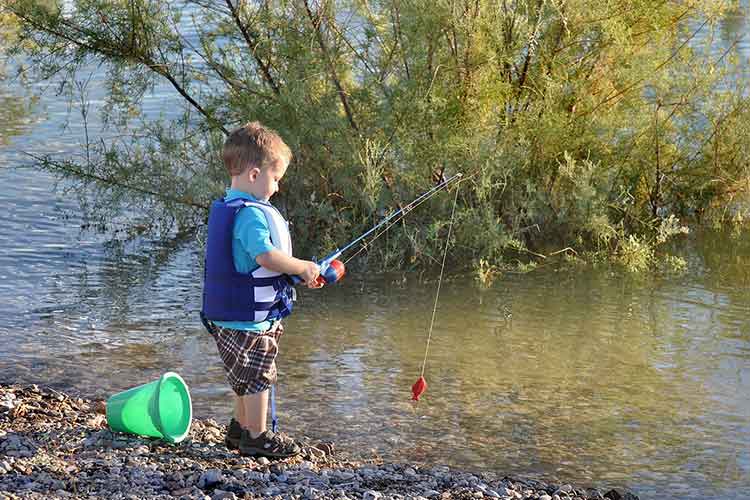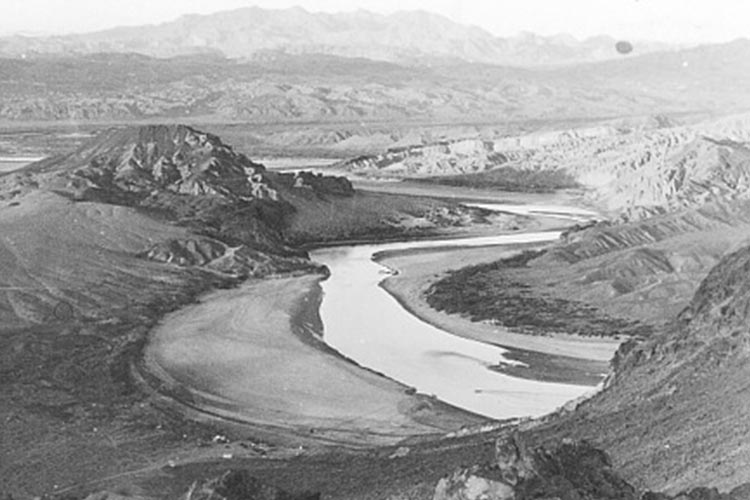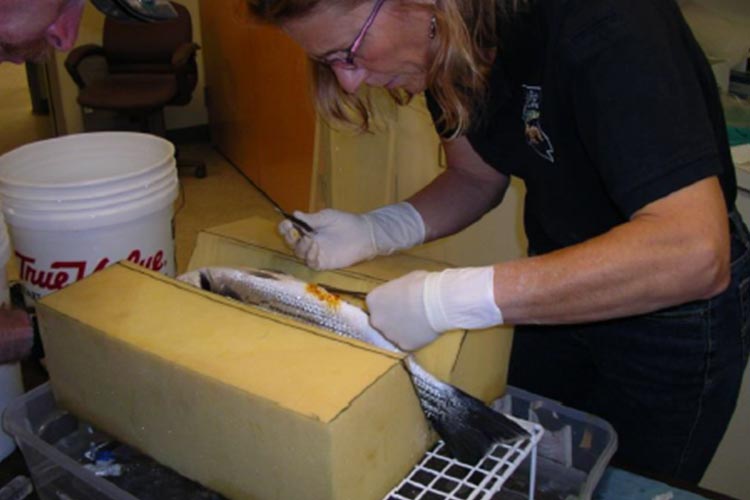
The Story of Sport FishEach year, millions of people flock to Lake Mead and Lake Mohave, in no small part because of these reservoirs’ finned residents, from striped bass to catfish. These sport fish haven’t always been in these waters – they were brought here relatively recently to help lure in anglers. Before the mid-1900’s, recreational fishing wasn’t a common activity along this stretch of the Colorado River since the area was remote and only a few fish species were present. The fish that swam the waterway were mostly subsistence for Native Americans and early settlers in the area. But once the Hoover Dam was built, Lake Mead and Lake Mohave became prime habitat for sport fish. In 1935, only a few years after the completion of the dam, the U.S. Fish and Wildlife Service released1 largemouth bass into Lake Mead and over the next seven years the agency added black crappie, bluegill, and green sunfish. But all of these new fish needed something to eat, so in 1954 biologists from Nevada, Arizona, and California decided to stock the lake with a smaller fish, threadfin shad, which could serve as a food source.  Over the next decade, the water levels in Lake Mead began to change as its upstream neighbor, Lake Powell, was filled. These fluctuating water conditions triggered the decline of populations of largemouth bass – the prime sport fish species. In 1969, officials from Arizona and Nevada decided to add striped bass because these fish can readily adapt to lake changes in lake elevation. To further diversify the fishery, they also added cold water species like silver salmon and a few different types of trout. 
A rainbow trout caught for release in Lake Mohave. Lake Mohave was stocked too – with rainbow trout, threadfin shad, and more. There, trout flourished in the cold waters from the bottom of Lake Mead released through Hoover Dam into the deep canyon areas of upper Lake Mohave. Bass, black crappie, channel catfish, and sunfish thrived in the warmer, shallower parts of the reservoir. While the lake was never stocked with striped bass, they arrived there anyway, perhaps by passing from Lake Mead to Lake Mohave when the high water and upstream flooding in the Colorado River necessitated passing water through the Hoover Dam spillways in 1983. Today, fishing is a thriving pastime on the lakes - the annual value of the fisheries in Lake Mead and Lake Mohave is near $100 million. Bass are a particularly popular catch. The smallmouth bass population is booming, perhaps because dropping lake levels are producing more of the rocky shoreline habitat where these fish flourish. Striped bass populations tend to go through cycles in these reservoirs; after the initial stocking, the population exploded, at first producing huge fish. But over time the population leveled out, producing a great deal of average-sized fish. So there may not be as many thirty-pound stripers as there used to be, but there are more than enough smaller specimens to go around. 
Photo Credit: NPS The sport fish in these lakes do make things harder for the local native fish species, which are struggling to hold on. Aggressive, predatory fish like bass can outcompete less dominant species like razorback suckers, complicating conservation efforts. But sport fish aren’t all bad news for the ecosystem2; not only do these fish stock anglers’ coolers, they also serve as an important food source for aquatic birds. Plus, money and effort spent to maintain and improve the habitat for sport fish can help native fish thrive too. 2 Lake Mohave Annual Sport Fish Surveys and Habitat Enhancement Project(PDF) So as multiple agencies that oversee management of the lakes - seek to maintain high water quality and healthy ecosystems, they are working to help all the plants and animals that live there, including native fish and sport fish. One Fish, Two Fish, Old Fish, New Fish
The Colorado River before the Hoover Dam was built. Ecosystems exist as a delicate fabric of interwoven relationships between organisms and the landscape they inhabit. While the natural environment is composed of fragile systems made up of countless parts, both dependent and steadfastly suspicious of one another, it may be surprising to learn that when managed to maintain the greatest extent of natural processes and a diversity of components, ecosystems can prove resilient in the face of new neighbors. Lake Mead was created when the Hoover Dam formed a lake where a great river once flowed. The native fish that once swam in the warm silty waters of the Colorado River became the first residents of a clearer, cooler Lake Mead. This new habitat soon became home to fish transported from other regions and habitats to provide recreational fishing opportunities. Both the native and the introduced non-native fish had to adapt to their new home; none of the fish species in the lake were in their former ideal conditions. The management trick is to support a variety of habitat conditions within the lake and monitor the fish as they adapt. Read MoreHere Fishy Fishy...
A striped bass is tagged for research purposes. Finding out where fish like striped bass go in a lake as big as Lake Mead can be a tricky business, but it’s an important question. By understanding these animals’ habits - like how far they travel and where they spend most of their time - we can better manage them and keep their populations healthy. Researcher Debora Herndon of the Nevada Department of Wildlife (NDOW) is concerned with striped bass at Lake Mead and how lowering lake levels may affect them. But finding out where they live now and how far they travel was a bit more challenging than anyone thought. |
Last updated: December 21, 2017
